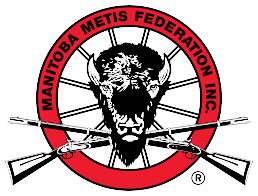Information about Homelessness
Homelessness is defined as anyone who does not have access to safe, affordable, appropriate, permanent housing to which they can return whenever they choose.
What images come to mind when you think of people experiencing homelessness? You might imagine someone sleeping in park shelters, living on the streets or in cars, staying in an emergency shelter, or staying under a bridge. Unfortunately these scenarios can all be correct. However, the person you see on the street is just the tip of the iceberg, representing a small portion of the homeless population in our city.
Homeless people are individuals and families who once had housing but now have no place of their own to live and don’t have enough money to pay for life’s necessities. For a variety of reasons, increasing numbers of people in our community find themselves without access to sustained, safe and affordable housing.
Brandon Housing First is initially focusing our efforts on those who are dealing with chronic and episodic homelessness. Chronically homeless refers to individuals, often with disabling conditions, who are currently homeless and have been homeless for six months or more in the past year. Episodically homeless refers to individuals who are currently homeless and have experienced three or more episodes of homelessness in the past year.
Types of Homelessness
- Unsheltered
This includes people who lack housing and are not accessing emergency shelters or accommodation, except during extreme weather conditions. In most cases, people are staying in places that are not designed for or fit for human habitation.
PEOPLE LIVING IN PUBLIC OR PRIVATE SPACES WITHOUT CONSENT OR CONTRACT
- Public space, such as sidewalks, squares, parks, forests, etc.
- Private space and vacant buildings (squatting)
- Living in cars or other vehicles
- Living in garages, attics, closets or buildings not designed for habitation
- People in makeshift shelters, shacks or tents
- Emergency Sheltered
This refers to people who, because they cannot secure permanent housing, are accessing emergency shelter and system supports, generally provided at no cost or minimal cost to the user. Such accommodation represents a stop-gap institutional response to homelessness provided by government, non-profit, faith based organizations and / or volunteers.
EMERGENCY OVERNIGHT SHELTERS FOR PEOPLE WHO ARE HOMELESS These facilities are designed to meet the immediate needs of people who are homeless. Such short-term emergency shelters may target specific sub-populations, including women, families, youth or Aboriginal persons, for instance. These shelters typically have minimal eligibility criteria, offer shared sleeping facilities and amenities, and often expect clients to leave in the morning. They may or may not offer food, clothing or other services. Some emergency shelters allow people to stay on an ongoing basis while others are short term and are set up to respond to special circumstances, such as extreme weather.
SHELTERS FOR INDIVIDUALS/FAMILIES IMPACTED BY FAMILY VIOLENCE These shelters provide basic emergency and crisis services including safe accommodation, meals, information, and referral. They provide a high security environment for women (and sometimes men) and children fleeing family violence or other crisis situations. Residents are not required to leave during the day. These facilities offer private rooms for families and a range of supports to help residents rebuild their lives.
EMERGENCY SHELTER FOR PEOPLE FLEEING A NATURAL DISASTER OR DESTRUCTION OF ACCOMMODATION DUE TO FIRES, FLOODS, ETC.
Information about Homelessness
Homelessness is defined as anyone who does not have access to safe, affordable, appropriate, permanent housing to which they can return whenever they choose. What images come to mind when you think of people experiencing homelessness? You might imagine someone sleeping in park shelters, living on the streets or in cars, staying in an emergency shelter, or staying under a bridge. Unfortunately these scenarios can all be correct. However, the person you see on the street is just the tip of the iceberg, representing a small portion of the homeless population in our city. Homeless people are individuals and families who once had housing but now have no place of their own to live and don’t have enough money to pay for life’s necessities. For a variety of reasons, increasing numbers of people in our community find themselves without access to sustained, safe and affordable housing. Brandon Housing First is initially focusing our efforts on those who are dealing with chronic and episodic homelessness. Chronically homeless refers to individuals, often with disabling conditions, who are currently homeless and have been homeless for six months or more in the past year. Episodically homeless refers to individuals who are currently homeless and have experienced three or more episodes of homelessness in the past year.
Types of Homelessness
1.) Unsheltered
This includes people who lack housing and are not accessing emergency shelters or accommodation, except during extreme weather conditions. In most cases, people are staying in places that are not designed for or fit for human habitation.PEOPLE LIVING IN PUBLIC OR PRIVATE SPACES WITHOUT CONSENT OR CONTRACT
- Public space, such as sidewalks, squares, parks, forests, etc.
- Private space and vacant buildings (squatting)
PEOPLE LIVING IN PLACES NOT INTENDED FOR PERMANENT HUMAN HABITATION
- Living in cars or other vehicles
- Living in garages, attics, closets or buildings not designed for habitation
- People in makeshift shelters, shacks or tents


